Whether you crave action or relaxation, you will relish radio-controlled (RC) boating because there is nothing quite as comforting as gliding your own RC boat across a pond. If you enjoy building and racing RC boats but do not know where to start, read on for an avalanche of helpful hints.
Table of Contents
The Basics of RC Boat
Easy-to-use boat kits are widely available for the craftsman who wants building satisfaction. Most of the kits may be 90 per cent pre-built and may include an electric motor/engine, radio, radio gear, batteries and other required accessories.
Boat kits with a single motor and battery (brushless electric motor and a rechargeable Ni-MH/lithium-polymer battery) are the norm. However, twin motored boat kits are also available. Take note, the standard running time of a single-motor boat is around three to six minutes only.
The drive system of a typical RC boat is very simple. An electric motor near the front of the boat is connected to a shaft that runs towards the back of the boat and out through the bottom of the hull. This shaft is contained within a tube, called stuffing tube, which is filled with grease.
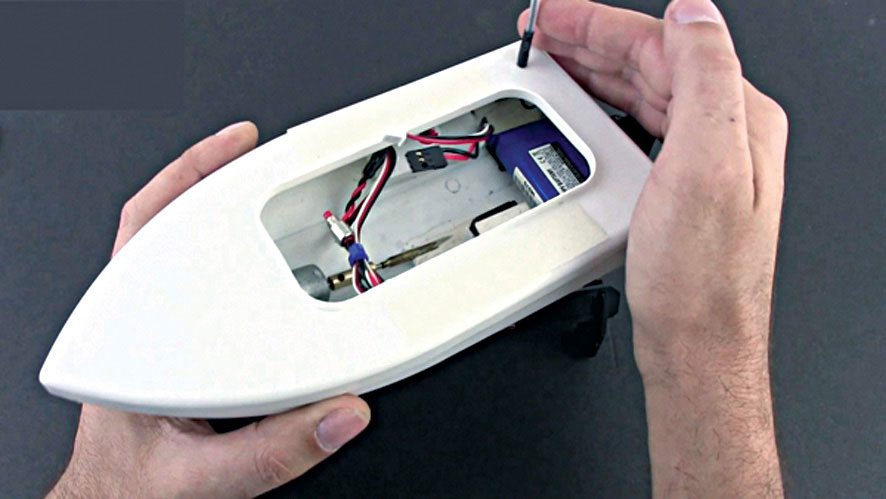
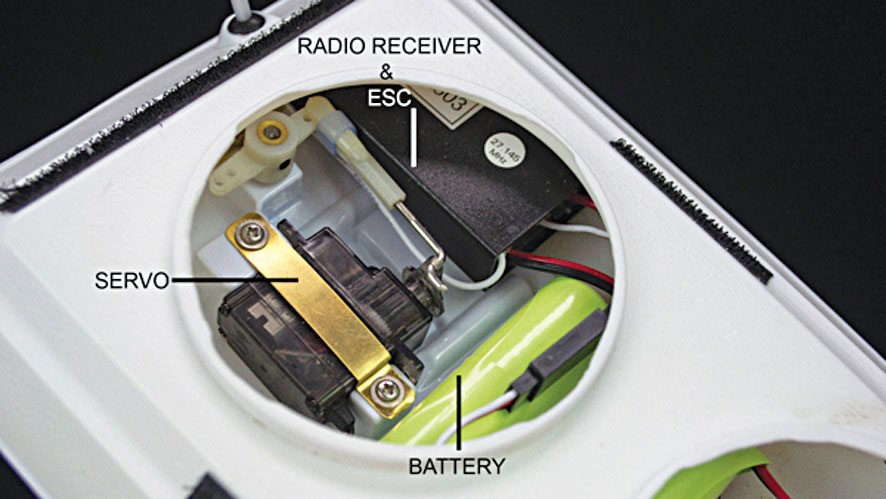
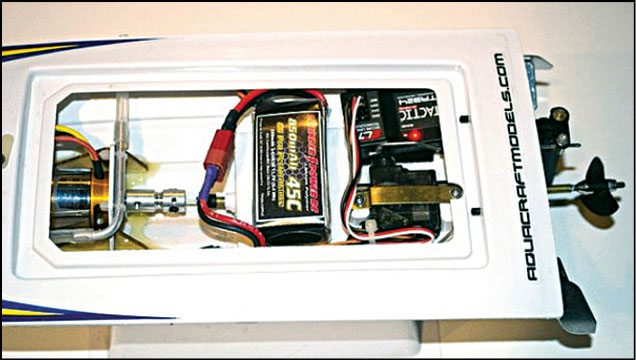
The grease in the stuffing tube provides lubrication and also prevents water from entering the hull. At the end of the shaft is the propeller. Steering is accomplished via a completely submerged rudder placed just behind the propeller. A shaft on the rudder protrudes into the hull, where a small servo actuates it in either direction.
The radio receiver and electronic speed control (ESC) for the motor are usually enclosed in a single waterproof casing. Emerging from this casing are the radio antenna, rudder servo cable, battery wires and power on/off switch. The built-in battery pack (Ni-MH or lithium-polymer) with at least 1100mAh capacity provides a nominal DC supply voltage of 7.2V (1.2Vx6 Ni-MH or 2C lithium-polymer).
Electronics in RC Boat
RC boats provide a totally different experience than flying a plane or driving a car on many different levels. Do-it-yourself (DIY) kits of ready-to-run/ready-to-float (RTR/RTF) boats have made it easier for just about anyone to get into RC boat modelling easily and quickly. RC boat kits are more popular than ever and for many great reasons.
From the fit and finish to the outstanding performance, the quality of today’s DIY kits are better than ever. However, besides the aesthetics of the RC boat, there are other considerations to think about such as the power system, drive system, radio system, battery, charger and a lot more.
Power system
A major part in the power system of an RC boat is the brushed or brushless electric motor. While the brushed motor system is slightly slower and less expensive but still provides plentiful power and runtimes, the brushless motor system offers more power, requires less maintenance and is more efficient.
Drive system
In the drive system, usually the electric motor transfers its power to the propeller via some sort of drive shaft. The drive shaft has some sort of tube (stuffing tube) that helps it to exit the hull and establish a rigid connection with the propeller mount.
Radio system
The radio system is a combination of the radio frequency (RF) transmitter and receiver. Now, the good old 27MHz (and 75MHz) radio systems have, for the most part, been replaced with 2.4GHz radio systems. 2.4GHz radio systems are less prone to interference from other radio sources and free from undesired frequency conflicts.
Battery
An RC electric boat would need a suitable onboard battery pack. There are several things to consider when purchasing a battery pack, and one of the important things to consider is the type of battery. Ni-MH batteries are less expensive and provide solid performance. Ni-MH packs have a sharper discharge curve, which means, the speed and performance difference between the start and end of a run tends to be greater.
Lithium-polymer batteries are lighter in weight than Ni-MH packs and have a flatter discharge curve, which means, the performance from start to end is more consistent.
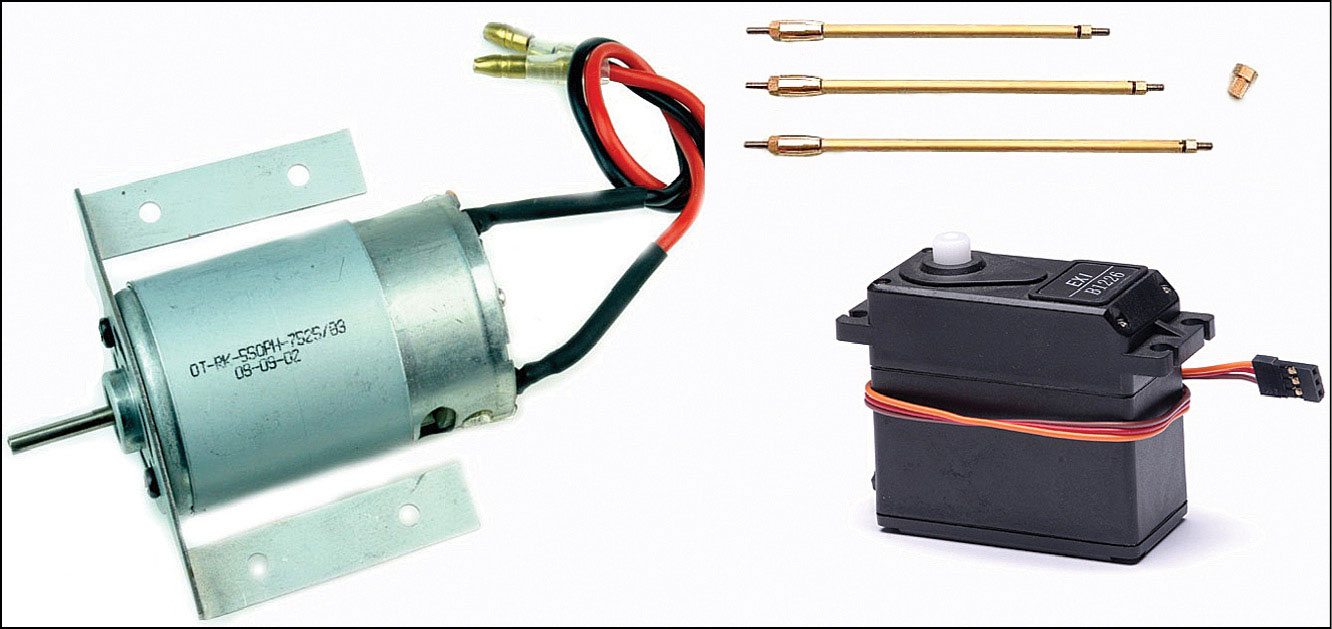
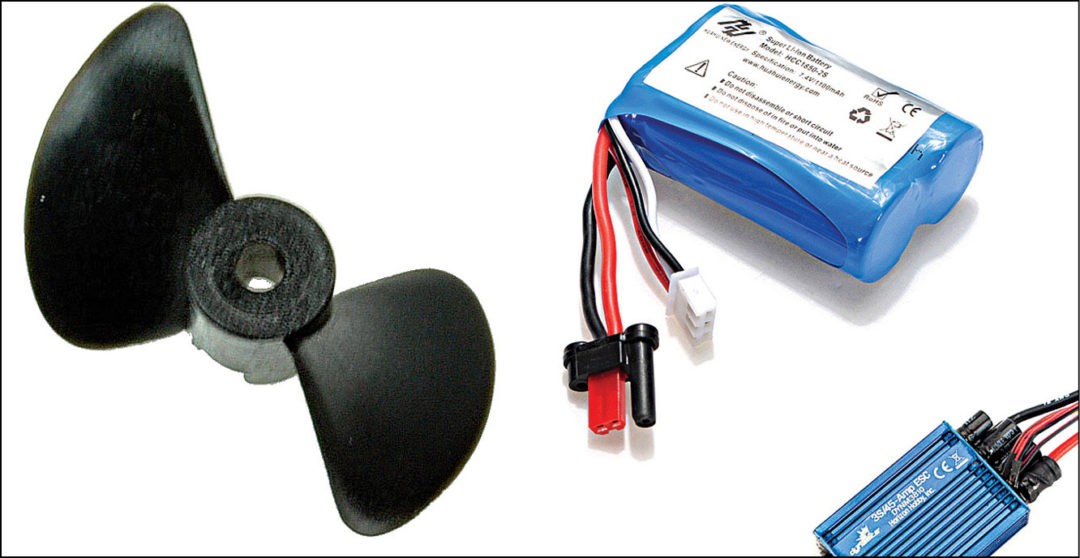

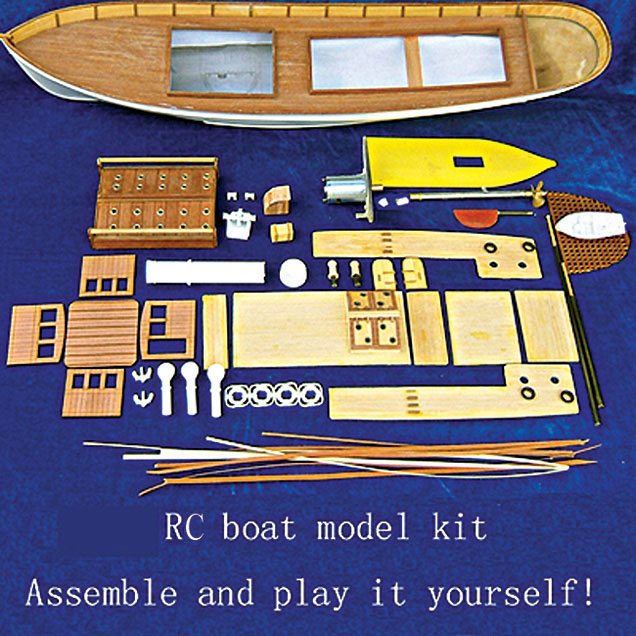
Further, lithium-polymer batteries are free from inherent performance degradation problems that Ni-MH packs have. First consideration with a lithium-polymer battery pack is the C rating, which refers to the amperage-discharge capability of a particular battery. A higher-rating battery pack can handle more load without any issue.
Battery charger
From the battery pack for handheld starters to the receiver pack, having a good battery charger can make it easier to run the boat. Although timer chargers and peak detection chargers are available for RC boats, the latter is recommended for better results.
A timer charger will save you money but a peak-detection charger, also known as peak charger, costs a little more and features advanced charging algorithms to ensure that the battery pack is brought to a complete charge safely.
ESC
Many of the latest RC boat model kits include a programmable ESC. The programming feature allows alteration of the cutoff voltage of the ESC to protect the battery pack from over-discharging. The enhanced option to program the ESC through the use of an ESC programming module (EPM) will also make it possible to activate braking, set cutoff preferences and choose throttle curves.
DIY Tips
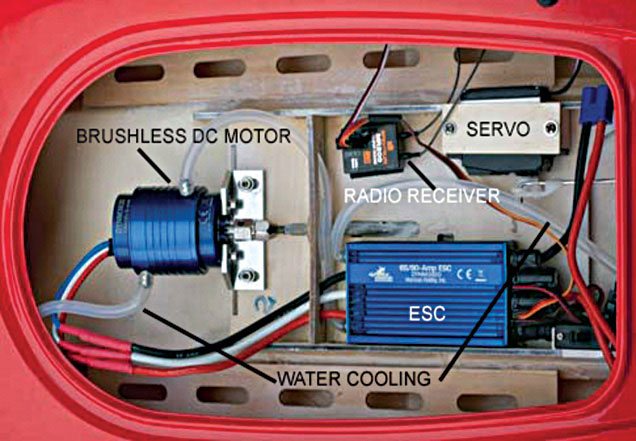
These days it is easy to buy DIY kits for RC boats from many online vendors. Independent spare parts for these boats are also available at affordable rates. If you want to drive a boat but you do not have access to a wide area of open water, a mini boat kit is an option. It is smaller than other boats but features similar handling and performance characteristics of its larger counterparts.
These mini boat DIY kits require very little preparation time to get on the water and provide an inexpensive way for someone to get their hands wet in the world of RC boat modelling. Whether it is a minor kit or a major one, there should be a small plastic bag that includes a basic assortment tool kit, in addition to the boat kit. The tool kit comes in most popular sizes used in RC world, and you will realise its value the first time you use it.
Water cooling
Water-cooling technique is widely used to keep the motor and ESC running relatively cool. The components are wrapped with coils of aluminium tubing, and the coils are connected with flexible tubing to a water pickup at the bottom of the hull. As the boat moves forwards, water is forced into the pickup and through the coils to provide conductive cooling of components.
Fig. 8 shows the inside view of a brushless DC motor (BLDC) based RC boat with an effective water cooling system.
Before you run your finished boat for the first time, you should lubricate the main propeller shaft with plenty of marine grease. This not only helps seal the flex shaft tube better, preventing water from seeping into the hull, but also reduces friction. If the canopy is not sealed properly, water may seep in to the hull. So, remember to seal off the area between the canopy and the hull itself using flexible clear tape or a similar high-quality adhesive tape.
Similarly, ESCs and radio receivers used in boats are highly water-resistant. However, extra steps to better seal off the electronics will help these live longer down the water.
Finally, use fresh batteries in the radio transmitter and a fully-charged battery pack in the boat.
RC boat modelling is a great hobby. Through this basic guide you can make sure your RC boat is set up properly to maximise fun and minimise down time. Well, just roll up your sleeves and prepare your boat for the water. Get ready to make some good waves!
Warning! Since RC boats are not designed as flotation devices, retrieval of a stalled RC boat is not an easy task. Never attempt to swim after a stalled RC boat. Do not get in the water for any reason to retrieve your boat. Always use a personal flotation device (PFD) for retrieval.
Check out more interesting DIYs at our website!
T.K. Hareendran is an electronics hobbyist, freelance technical writer and circuit designer.









Where can I get to buy a diy to boat kit in India.
I bought a catamaran boat with twin props and loaded with everything but the radio n reciever. How do I know how many channels I’m going to need? How do you tell if you’re buying one that will reach far away or not? Ty. And God bless.
A regular 2.4ghz system has a range of about 1.2 km.
Greetings! I need your help. I have a 35″ long PT boat that was built in 1969. I found it discarded and completely rebuilt the boat cosmetically. I am 100% electronically challenged. I have no idea whatsoever of the type of motor, servo, and/or electronic controls to run a boat like this. Any help with info and price listing would be so appreciated. Your website is very good and gave me hope. My grandson is looking forward to being able to run the boat. Look forward to hearing from you. I can send you a picture of the boat if you like. Just tell me how. Thank you so much!
James
I have a boat that the front end stays in water also it flips very easy so I cannot use it help
Is there anything out there, including Europe, for a 2 channel (or more) for model RC sailboats – that is, transmitter / receiver pair?
I have a Midwest Jim Wilder tugboat that I am building. What I need is all of the RC components to run it. A 12 volt motor came with the kit.
Can anyone recommend an all in one RC kit or do I need to buy individual components?
Hi Andre, I have asked your query on our forum page. Our community members will surely help you on this. You can visit the forum page here.
I need help getting my 81 inch scratch built 1/12 scale PT Boat up and running ! It weighs 35 pounds empty. I’ve been using 12 Volt 9Ah rechargeable batteries for over 10 years in my other boats. I’ve burned up 4 smaller 12 volt motors and 2 ESC’s so far. Overheating has been a problem since day 1. I switched to 2 – Andymark 2.5 CIM 12 Volt DC Motors and installed water cooling coils and cooling blocks under my 2 esc’s plus cooling fans but the ESC’s still cut out in barely 10 minutes.
Clearly I need bigger ESC’s or PWM’s or both to make the system work properly.
Any advice or suggestions would be greatly appreciated
Where do I find information on boat water cannons and their operation/construction?